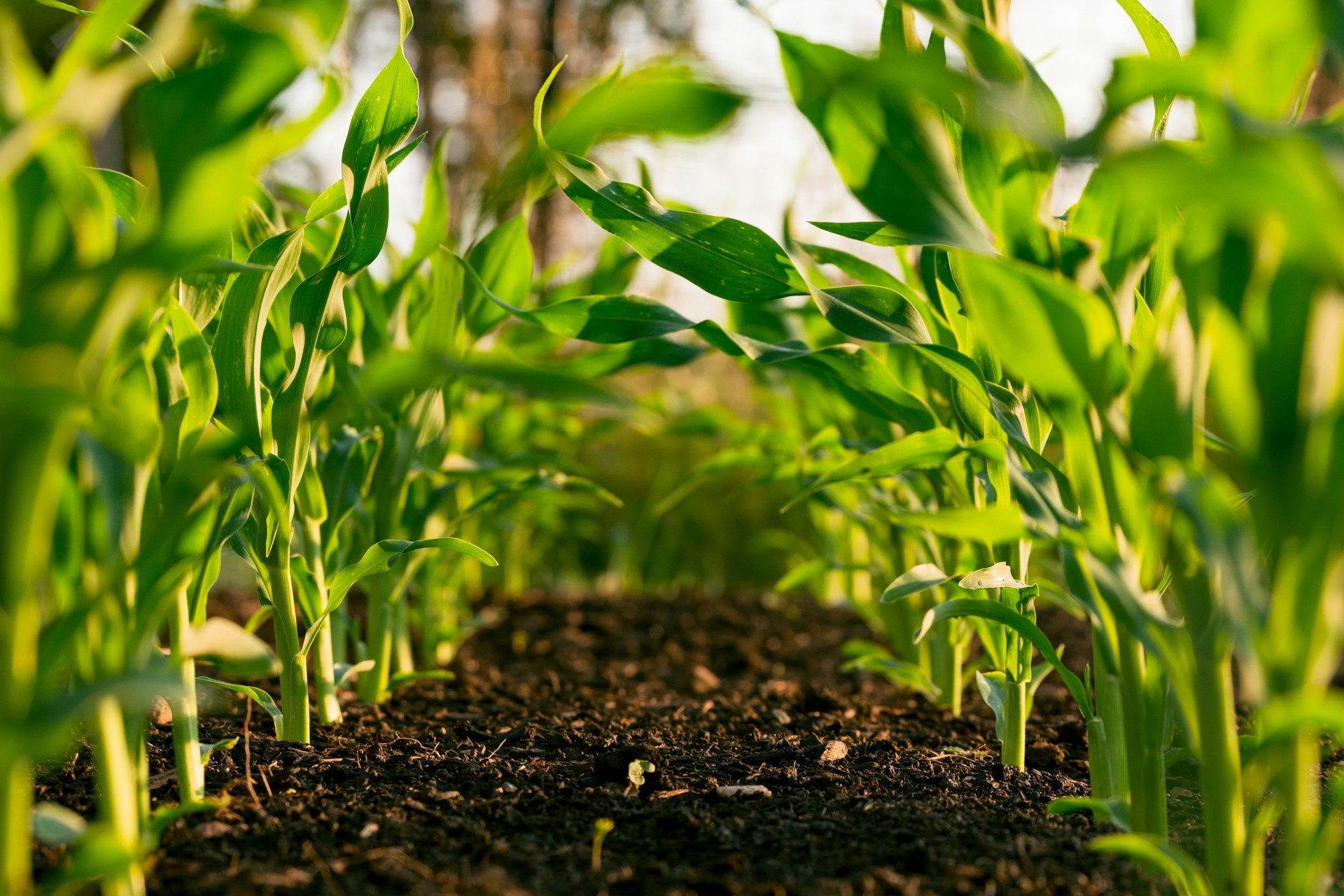Maize /meɪz/ (Zea mays), also known as corn in North American and Australian English, is a tall stout grass that produces cereal grain. It was domesticated by indigenous peoples in southern Mexico about 9,000 years ago from wild teosinte. Native Americans planted it alongside beans and squashes in the Three Sisters polyculture. The leafy stalk of the plant gives rise to male inflorescences or tassels which produce pollen, and female inflorescences called ears which yield grain, known as kernels or seeds. In modern varieties, these are usually yellow or white; other varieties can be of many colors.
First cultivated in what is today Mexico, maize relies on humans for its propagation. Since the Columbian exchange, it has become a staple food in many parts of the world, with the total production of maize surpassing that of wheat or rice. Much maize is used for animal feed, whether as grain or as the whole plant, which can either be baled or made into the more palatable silage. Sugar-rich varieties called sweet corn are grown for human consumption, while field corn varieties are used for animal feed, for uses such as cornmeal or masa, corn starch, corn syrup, pressing into corn oil, alcoholic beverages like bourbon whiskey, and as chemical feedstocks including ethanol and other biofuels.
Maize is cultivated throughout the world; a greater weight of maize is produced each year than any other grain. In 2020, total world production was 1.1 billion tonnes. It is afflicted by many pests and diseases; two major insect pests, European corn borer and corn rootworms, have each caused annual losses of a billion dollars. Modern plant breeding has greatly increased output and qualities such as nutrition, drought, and tolerance of pests and diseases. Much maize is now genetically modified.
As a food, maize is used to make a wide variety of dishes including Mexican tortillas and tamales, Italian polenta, and American hominy grits. Maize protein is low in some essential amino acids, and the niacin it contains only becomes available if freed by alkali treatment. In Mesoamerica, maize is personified as a maize god and depicted in sculptures.
Pre-Columbian development
Maize requires human intervention for it to propagate. The kernels of its naturally-propagating teosinte ancestor fall off the cob on their own, while those of domesticated maize do not.[2] All maize arose from a single domestication in southern Mexico about 9,000 years ago. The oldest surviving maize types are those of the Mexican highlands. Maize spread from this region to the lowlands and over the Americas along two major paths.[3] The centre of domestication was most likely the Balsas River valley of south-central Mexico.[4] Maize reached highland Ecuador at least 8000 years ago.[5] It reached lower Central America by 7600 years ago, and the valleys of the Colombian Andes between 7000 and 6000 years ago.[4]
The earliest maize plants grew a single, small corn ear per plant.[6] The Olmec and Maya cultivated maize in numerous varieties throughout Mesoamerica; they cooked, ground and processed it through nixtamalization.[7] By 3000 years ago, maize was central to Olmec culture, including their calendar, language, and myths.[8]
Mapuche people of south-central Chile cultivated maize along with quinoa and potatoes in pre-Hispanic times.[9] Before the expansion of the Inca Empire, maize was traded and transported as far south as 40° S in Melinquina, Lácar Department, probably brought across the Andes from Chile.[10]
Columbian exchange
After the arrival of Europeans in 1492, Spanish settlers consumed maize, and explorers and traders carried it back to Europe. Spanish settlers much preferred wheat bread to maize. Maize flour could not be substituted for wheat for communion bread, since in Christian belief only wheat could undergo transubstantiation and be transformed into the body of Christ.[11]
Maize spread to the rest of the world because of its ability to grow in diverse climates. It was cultivated in Spain just a few decades after Columbus's voyages and then spread to Italy, West Africa and elsewhere.[11] By the 17th century, it was a common peasant food in Southern Europe. By the 18th century, it was the chief food of the southern French and Italian peasantry, especially as polenta in Italy.[12]
When maize was introduced into Western farming systems, it was welcomed for its productivity. However, a widespread problem of malnutrition soon arose wherever it had become a staple food.[13] Indigenous Americans had learned to soak maize in alkali-water — made with ashes and lime since at least 1200–1500 BC, the process of nixtamalization. They did this to liberate the corn hulls, but coincidentally it also liberated the B-vitamin niacin, the lack of which caused pellagra.[14] Once alkali processing and dietary variety were understood and applied, pellagra disappeared in the developed world. The development of high lysine maize and the promotion of a more balanced diet have contributed to its demise. Pellagra still exists in food-poor areas and refugee camps where people survive on donated maize.[15]


Leave a comment
Comments (1)
<b>yes</b>